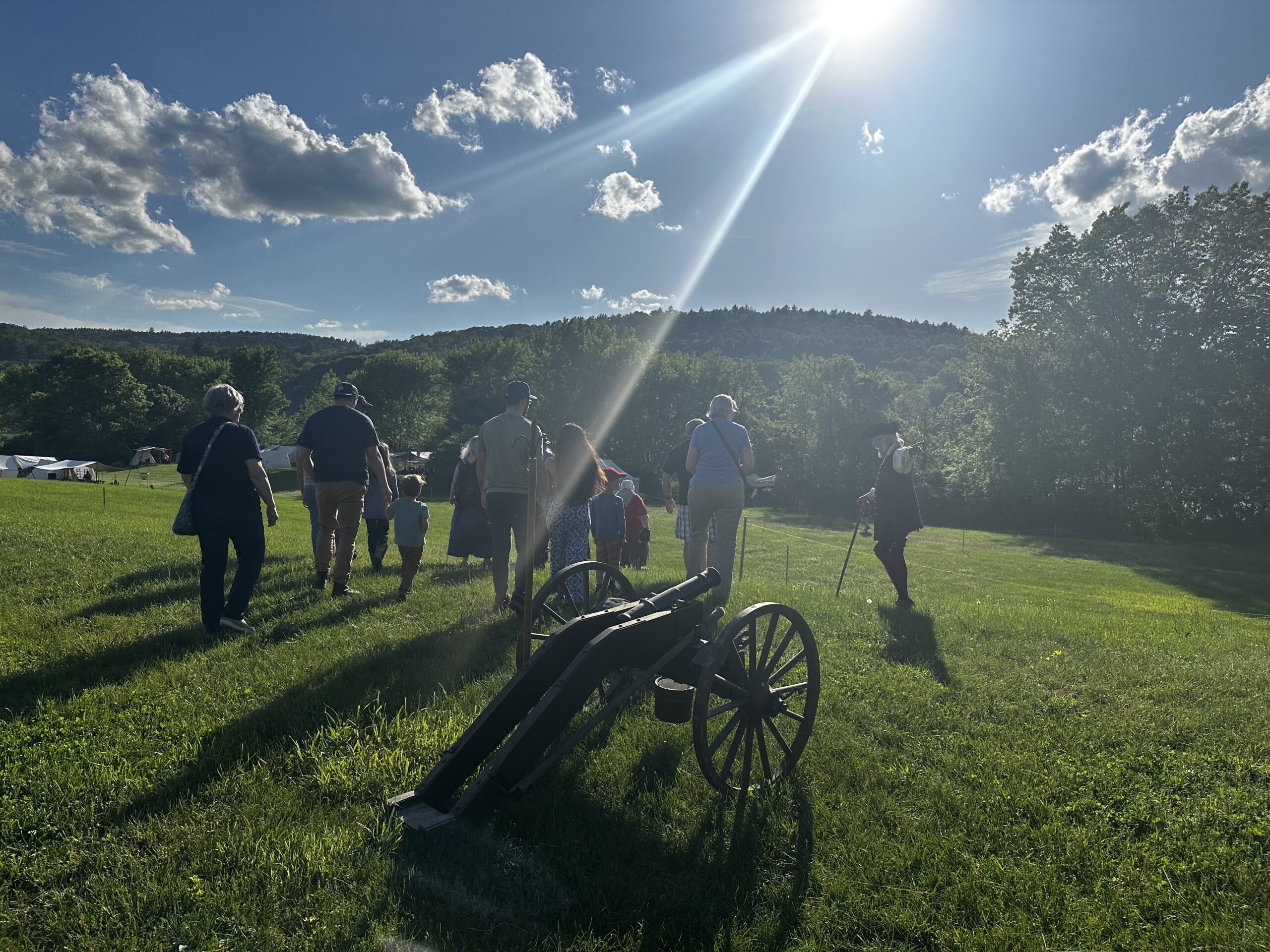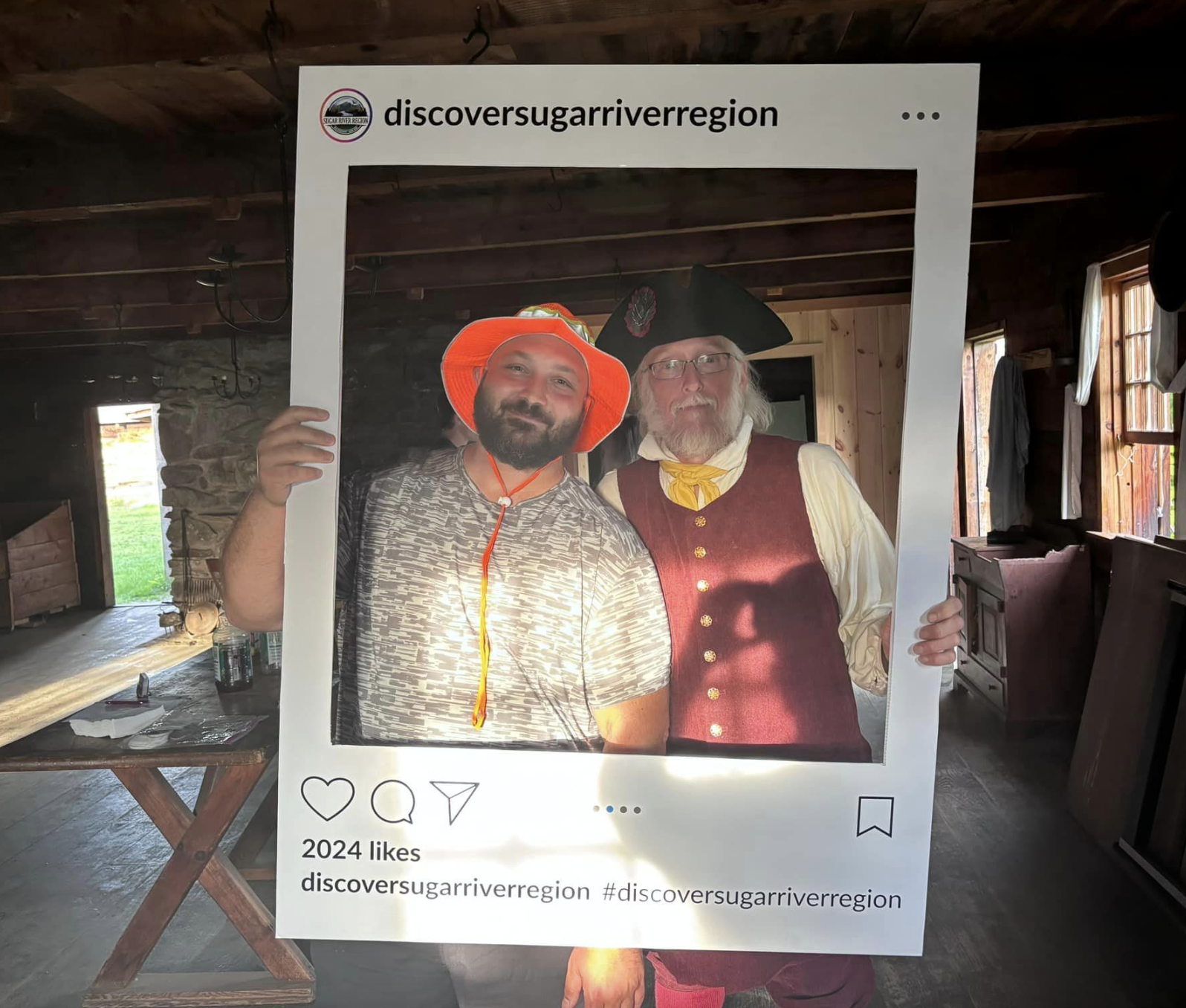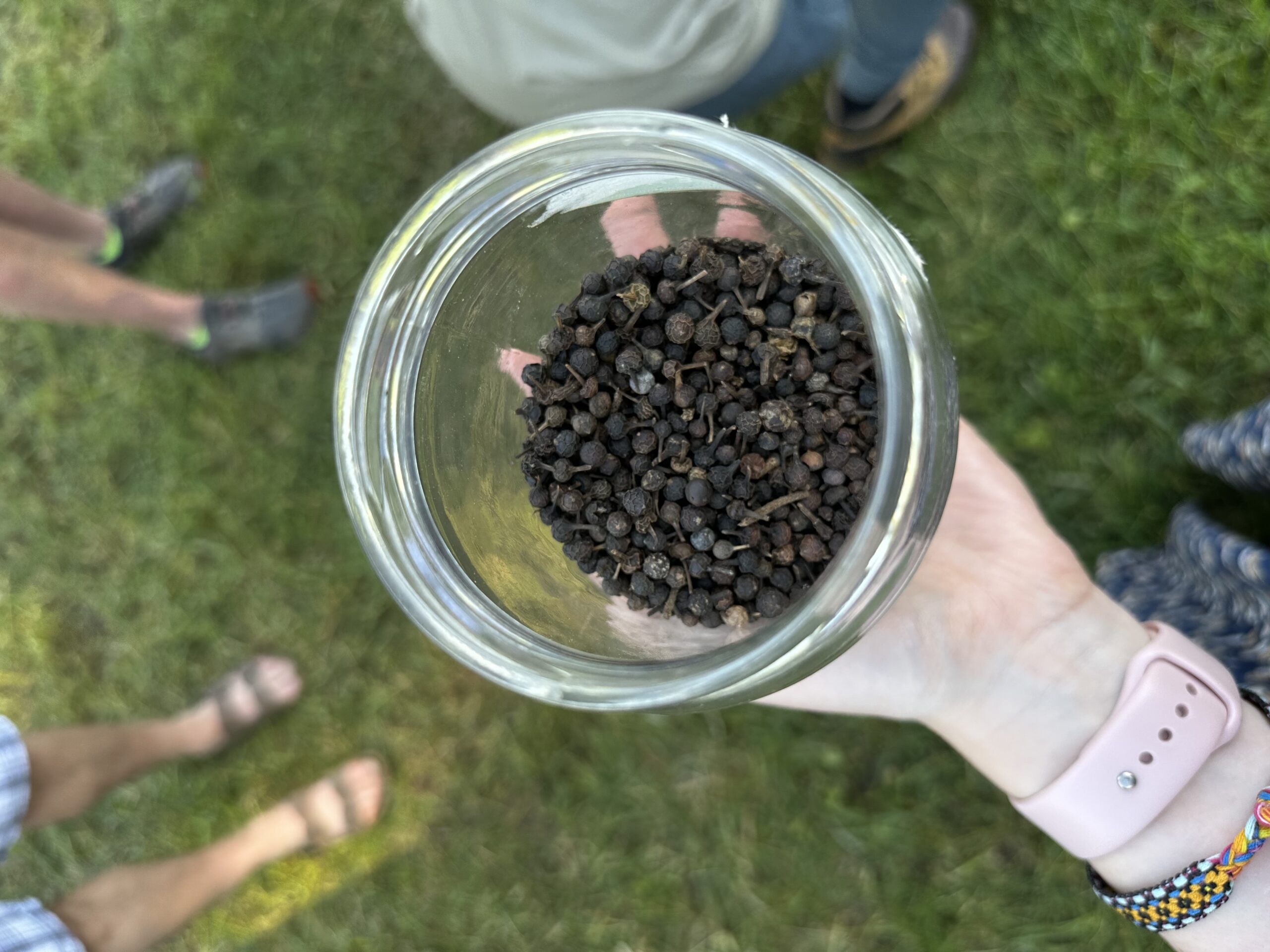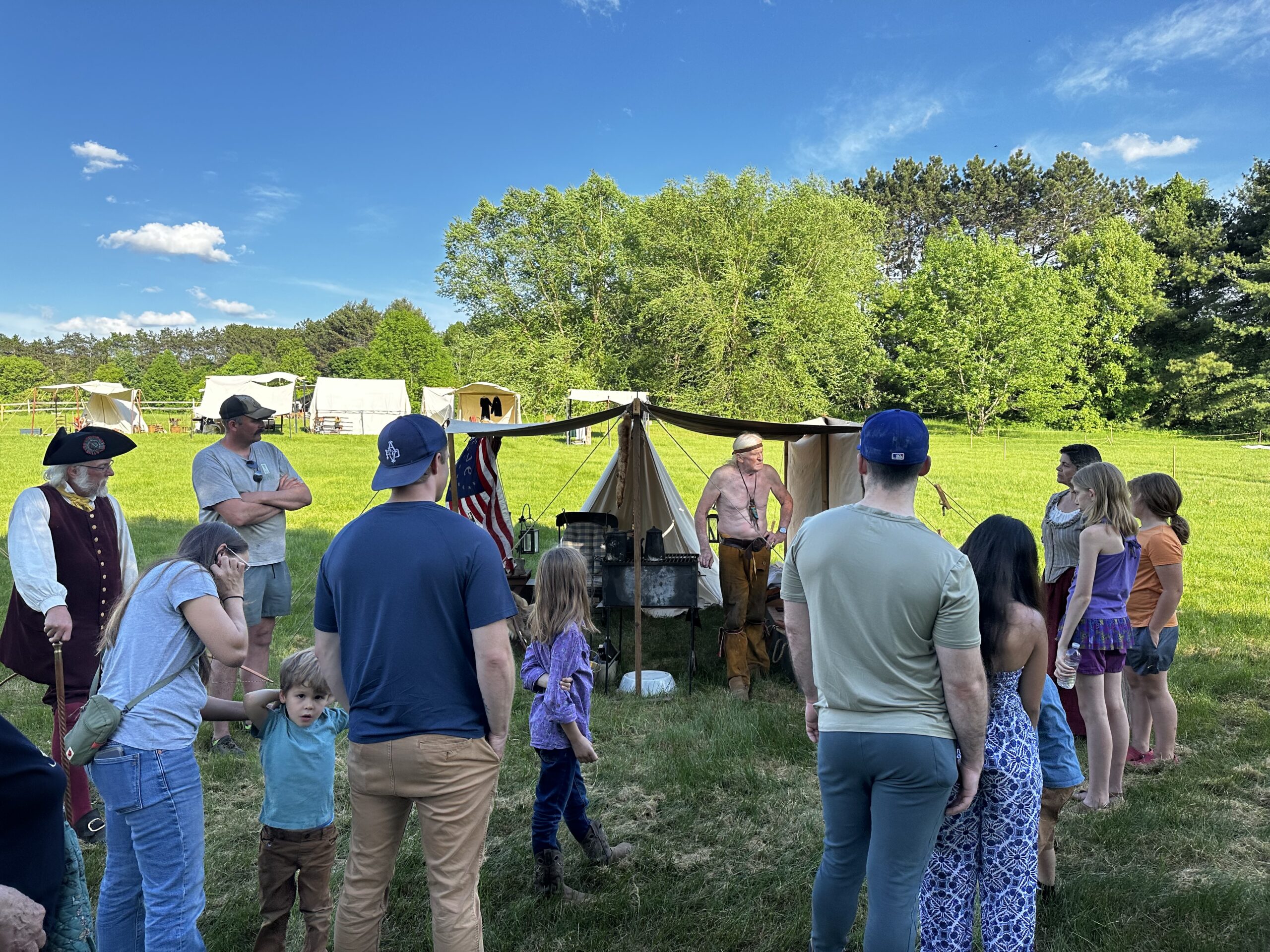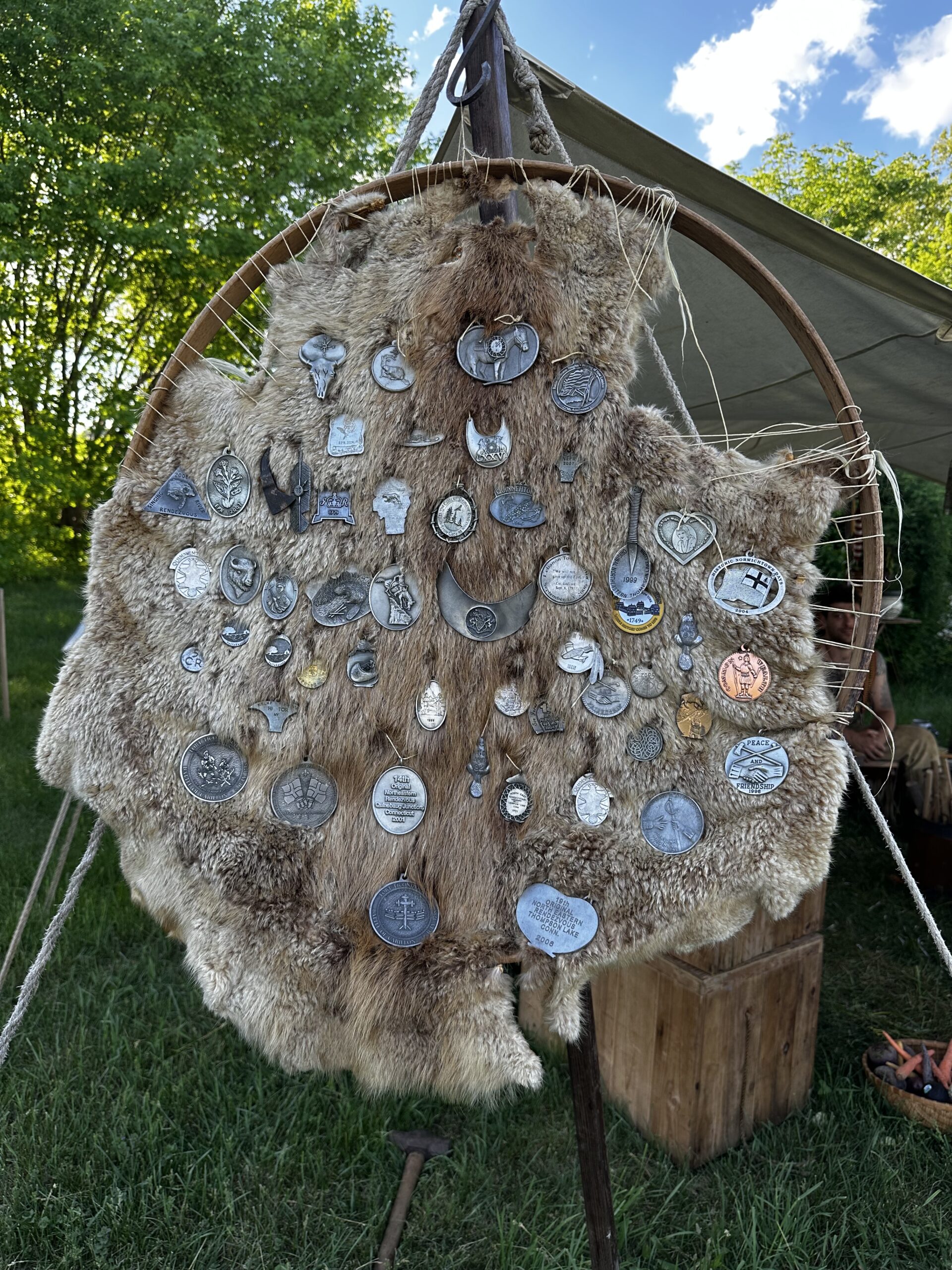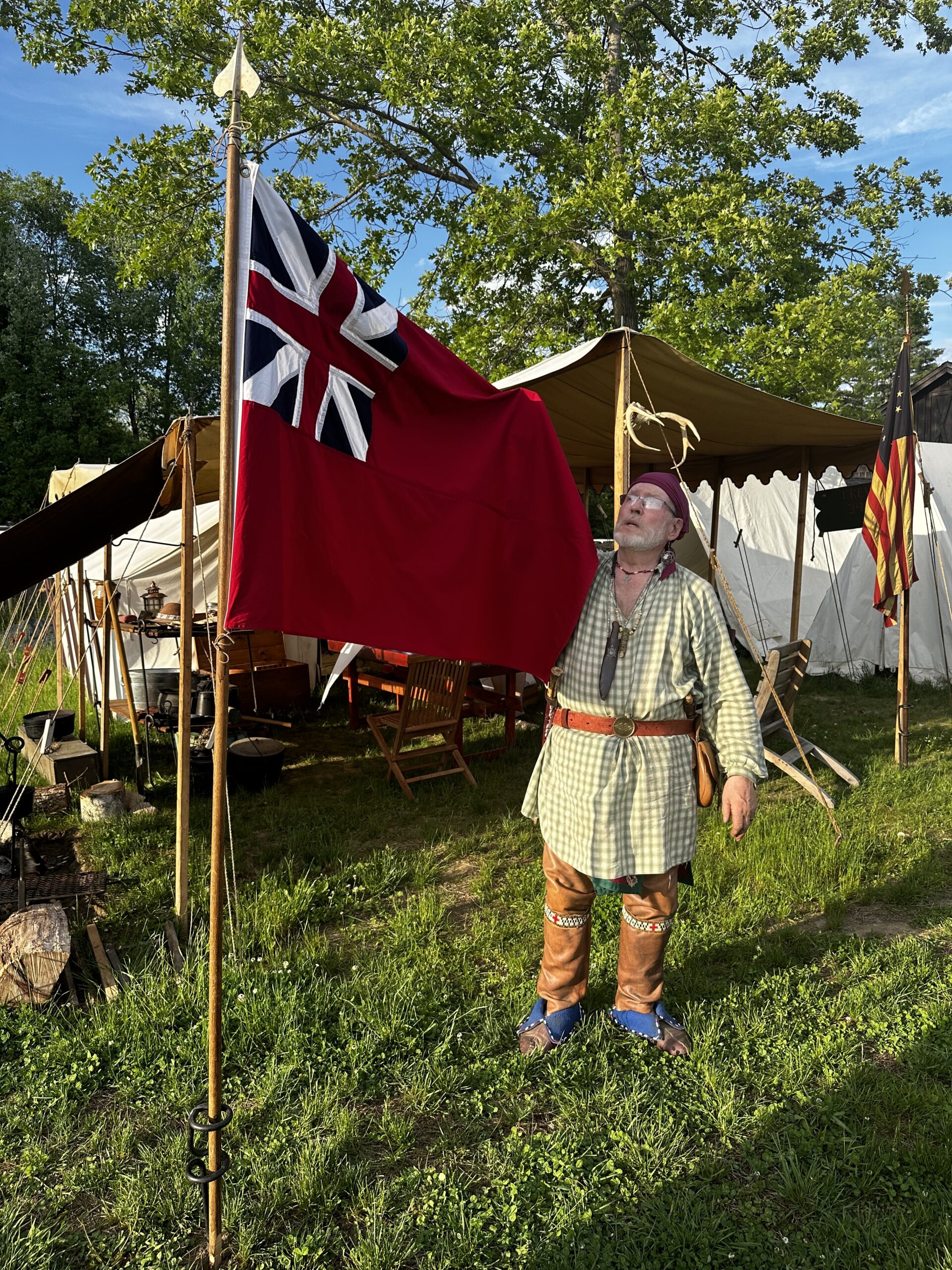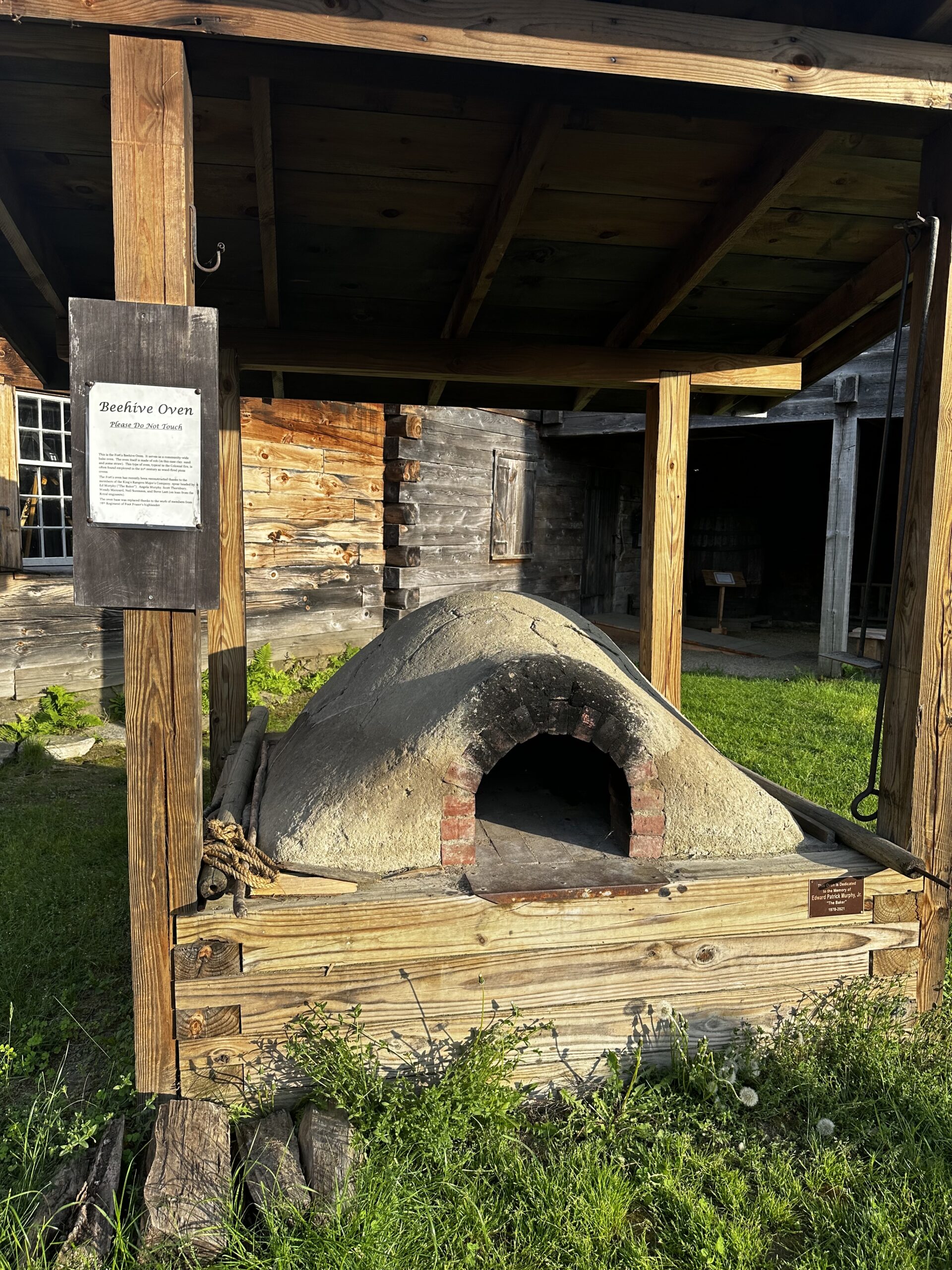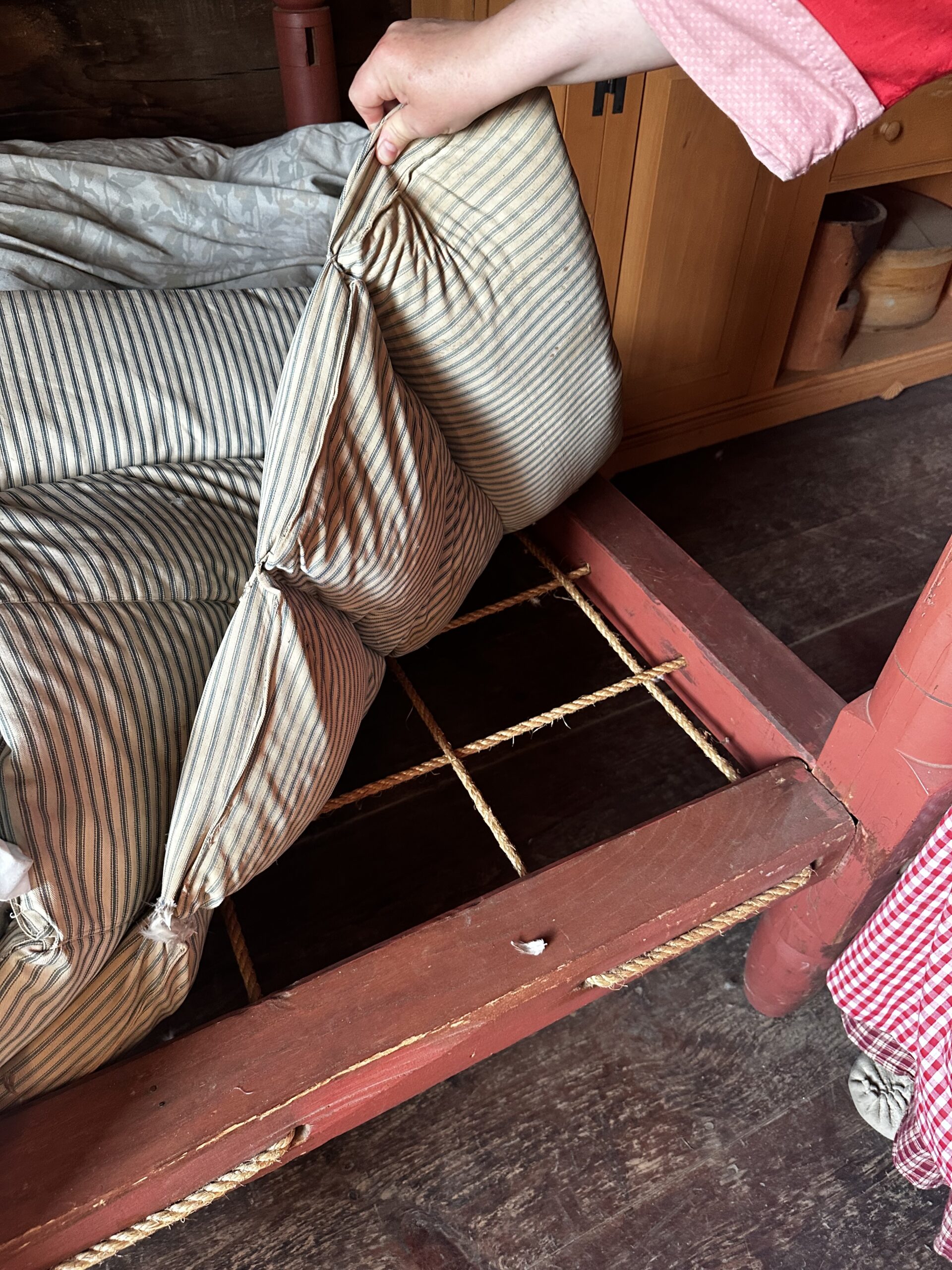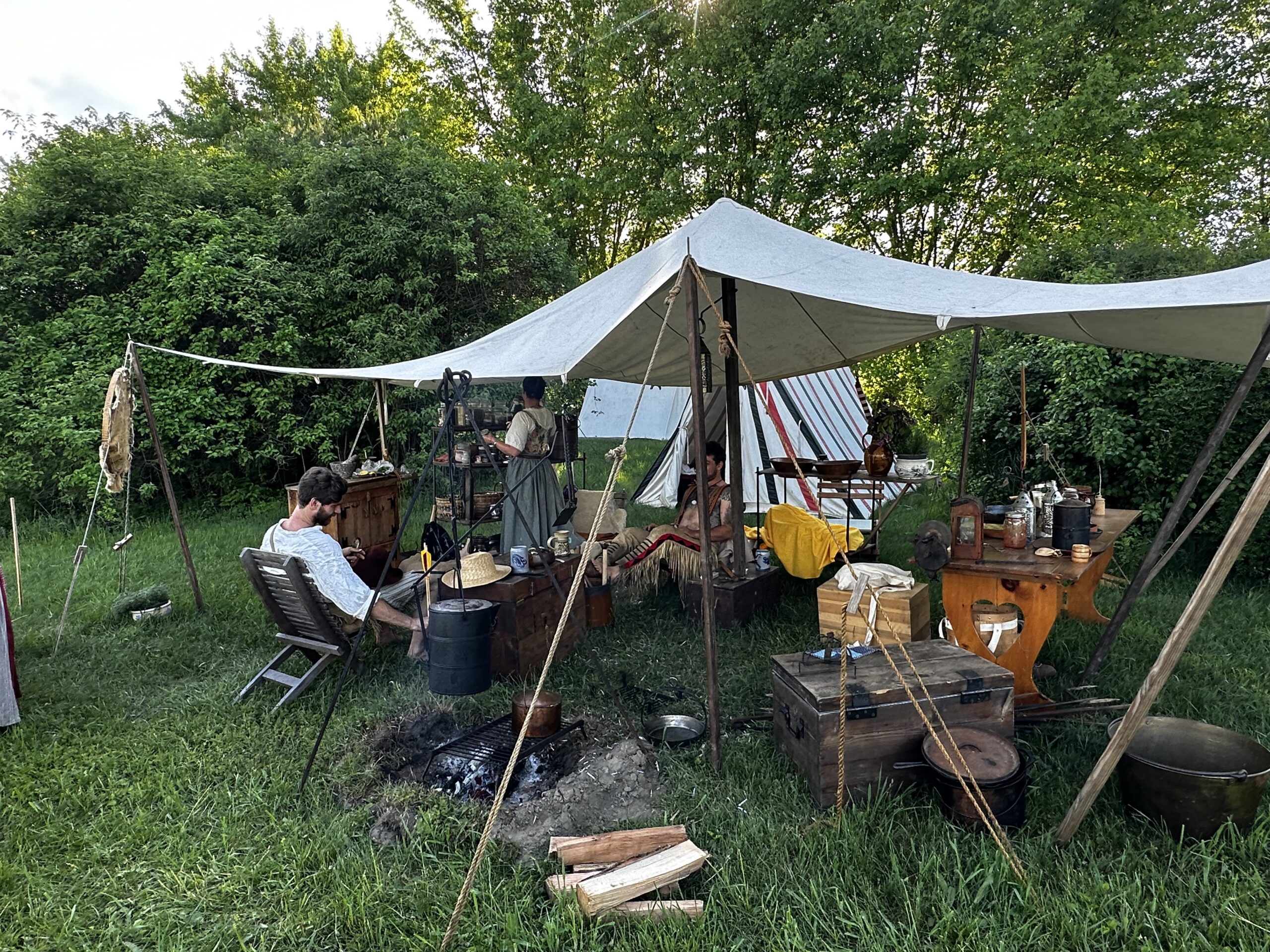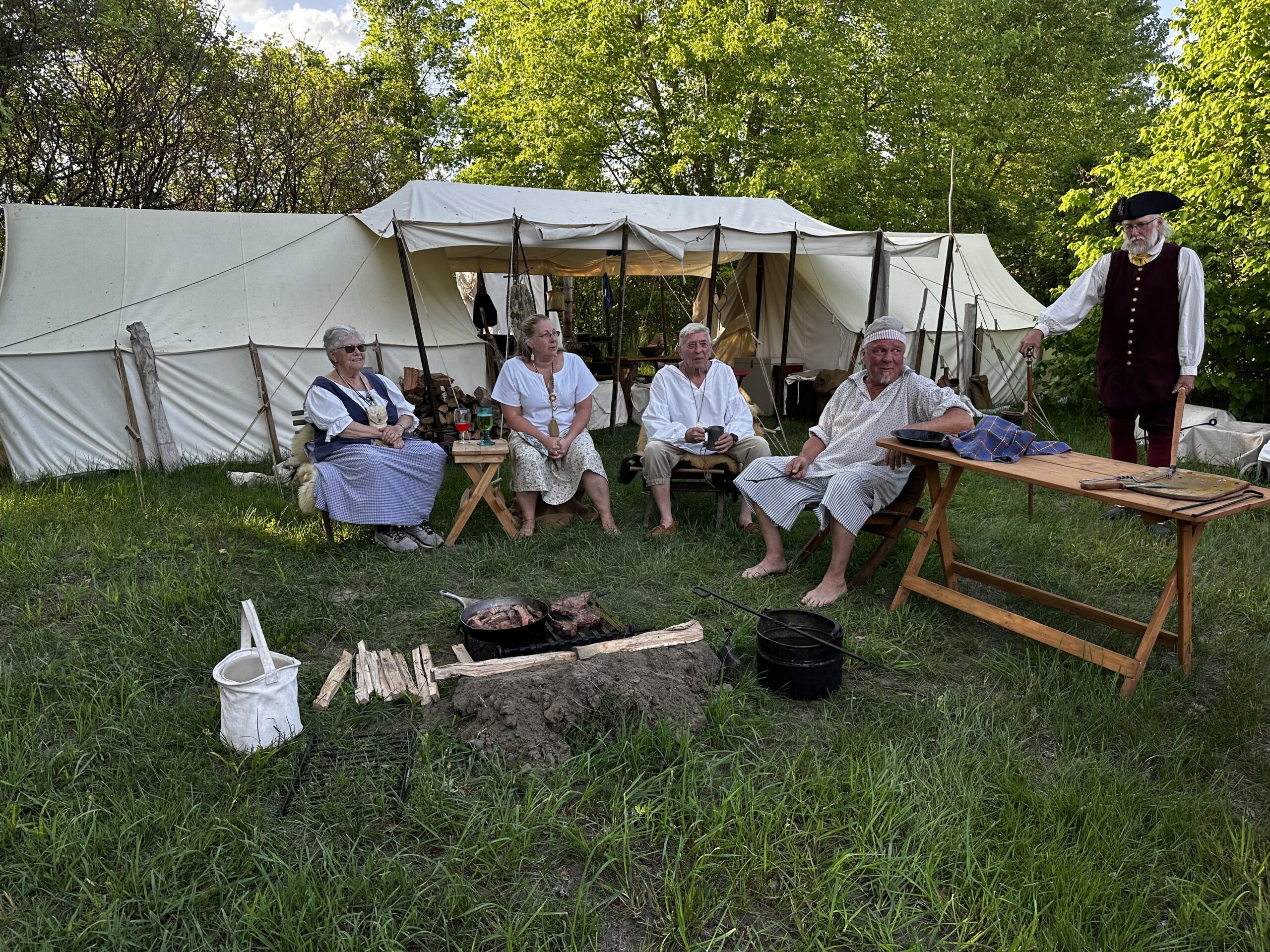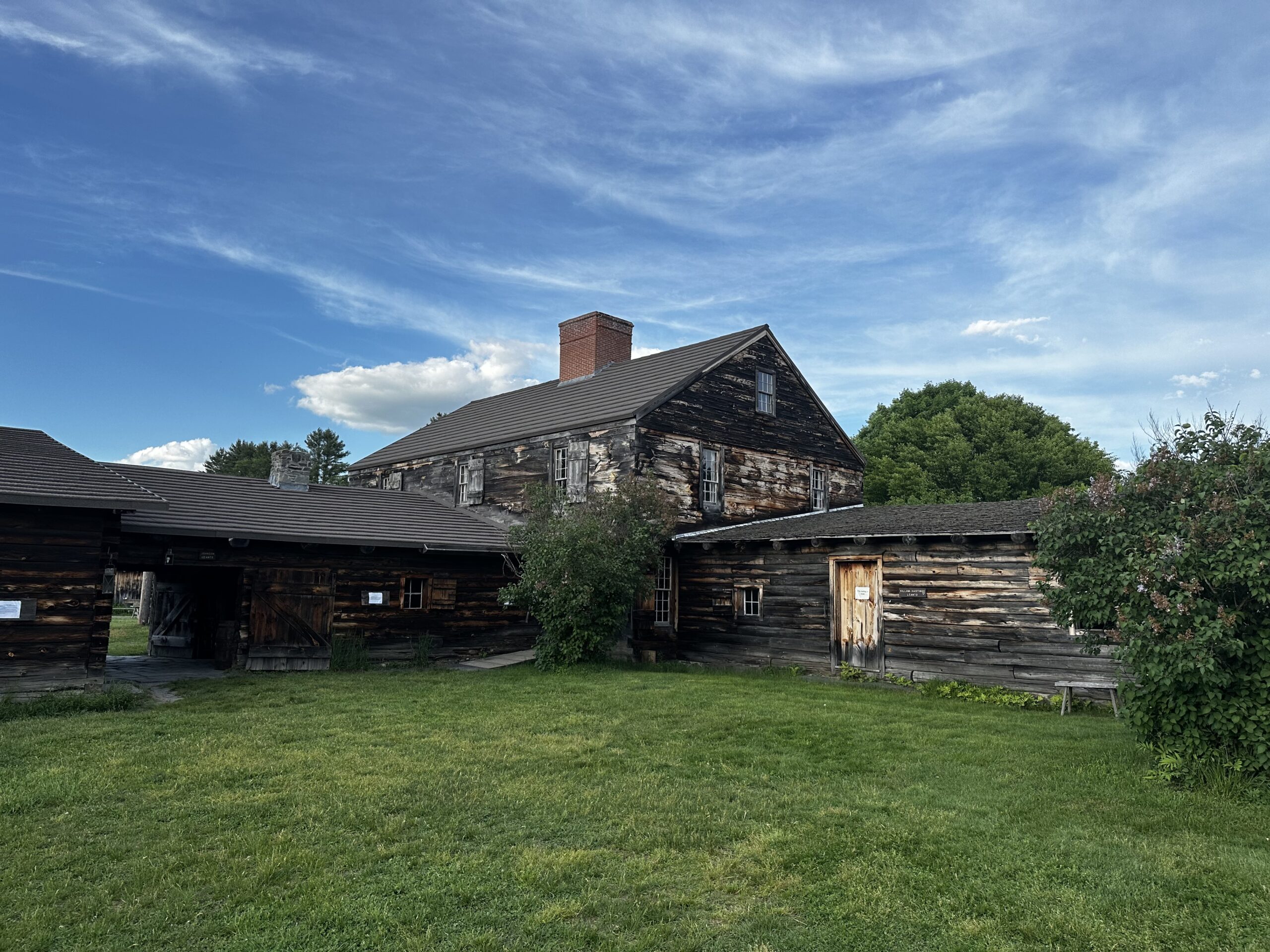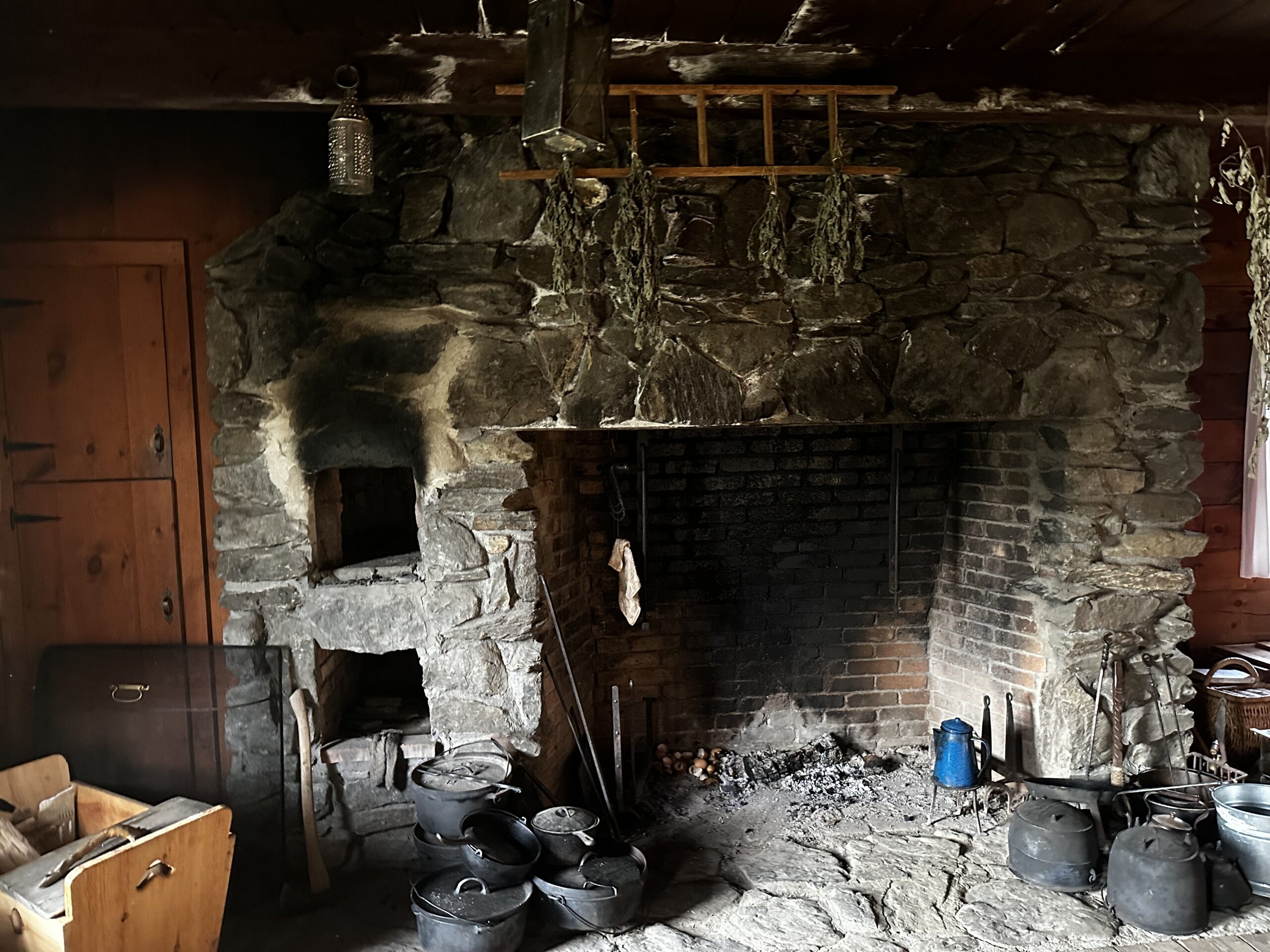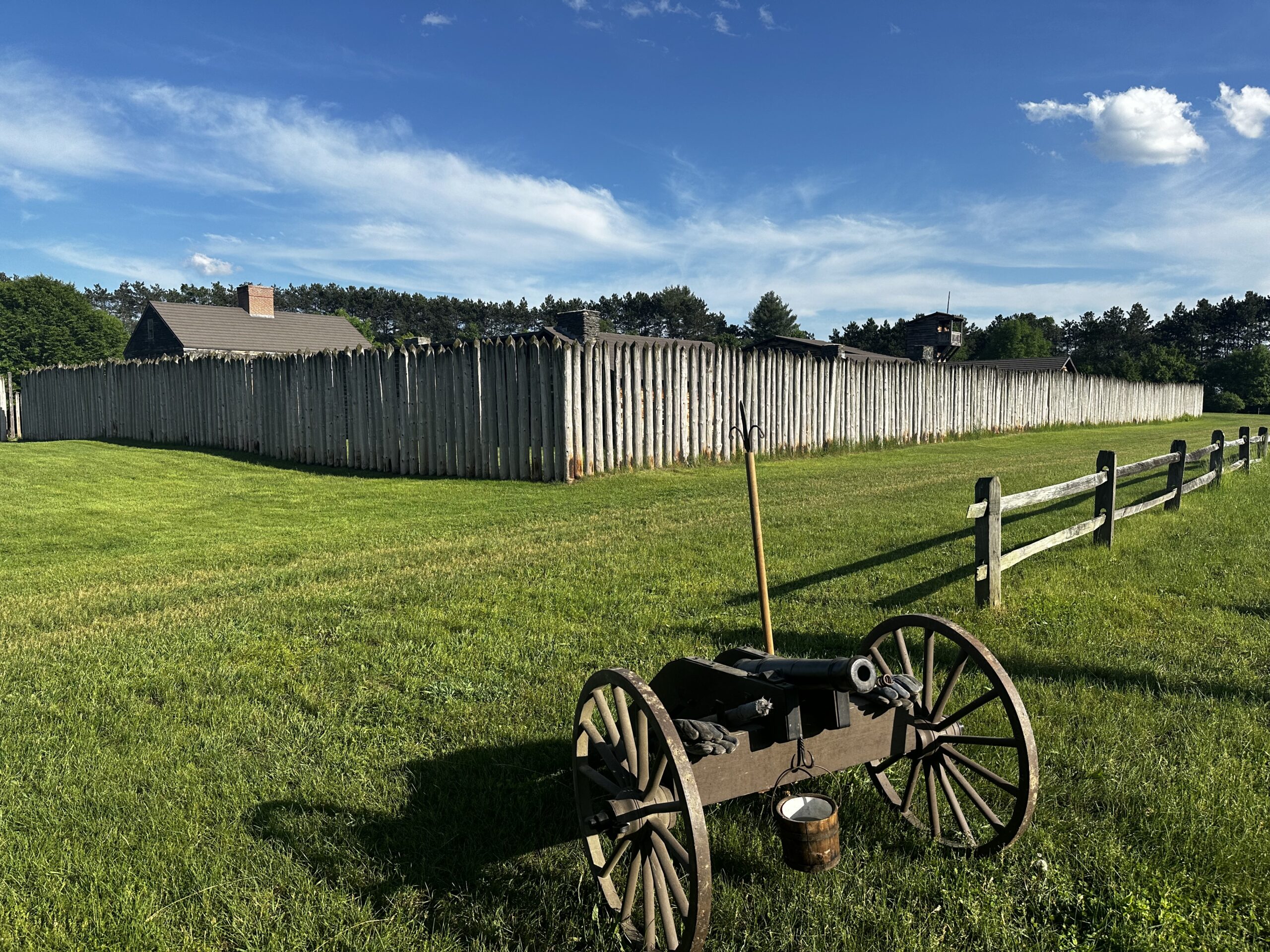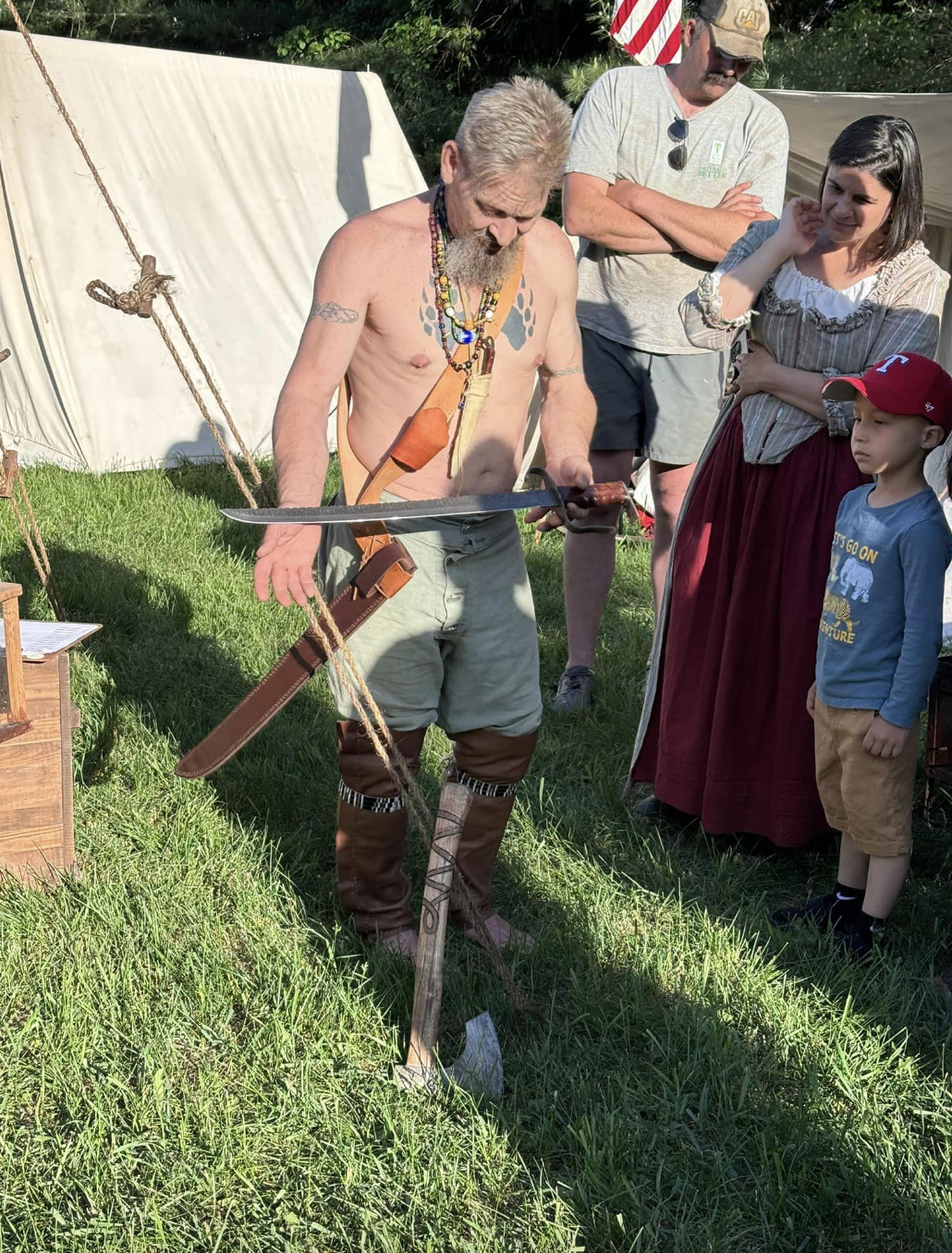May #SugarRiverSocial Hosted by the Fort at No. 4
May #SugarRiverSocial Hosted by the Fort at No. 4
The May Sugar River Social
The May Sugar River Social took place at the Fort at Number 4 in Charlestown, New Hampshire, and was the backdrop for a memorable night. With about 20 attendees, our evening began with a tour of the fort grounds, where we were transported back to the 18th century through the living encampment and engaging conversations with reenactors. After the tour, we gathered in the historic Hastings House with snacks and treats provided and cooked by the Fort.
Exploring the Encampment
Our first stop was at a tent where a young woman impressed us with her collection of spices, meticulously stored in jars. Among her treasures was a jar with “cubeb,” a spice unfamiliar to many of us, but smelled wonderful! Cubeb is also known as tailed pepper or Java pepper and is derived from the dried, unripe berries of the plant Piper cubeba, which is native to Java and Sumatra in Indonesia. This spice has a long history of use in culinary and medicinal applications.
Next, we visited a tent showcasing handmade wooden bows. The gentleman there demonstrated an old technique for making bowstrings, using deer sinew twisted into a single string. Watching this age-old craft come to life was a highlight for many attendees.
Meeting Boone and Her Tomahawk
One of the most memorable characters was Boone, a reenactor with a vibrant personality and a talent for throwing tomahawks. She proudly displayed her target playing card, marked with two hits in the center. Boone shared her secrets of throwing knives, emphasizing the importance of choosing a knife with a light end. She explained that this is to prevent gravity from pulling it off the target. Her enthusiasm and skill left a lasting impression on all of us.
Historical Flags and Fun Facts
At the final tent, we met a gentleman displaying a rare flag. He was flying both the Betsy Ross flag and a merchant’s flag, resembling the Union Jack on a red background. The merchant’s flag was used on the sea and in New Hampshire during the 17th-18th centuries. We learned that the British didn’t actually add the diagonal red stripes to the Union Jack until 1802! That makes this flag a significant piece of pre-19th-century history.
Bill, a member of the Fort’s Board of Directors, shared an entertaining and fascinating riddle about historical beehive ovens: “What two things do you own that you could use to tell the temperature of the oven?” The answer, he revealed, is your two arms! If you could count to five with your arms in the oven, it was not hot enough for use. Most people, he said, would guess things like a temperature gauge or thermometer.
Allyson, another brilliant reenactor and cook, enlightened us about the origin of the phrase “sleep tight.” It comes from the bed ropes that used to support down mattresses. These occasionally needed tightening to ensure a comfortable, concave-free sleep. You can follow Allyson on Tiktok – @M.Allyson.Szabo for more historic reenacting content!
Living History – The Original New England Primitive Rendezvous
The Original New England Primitive Rendezvous is a living history reenactment association of history buffs and enthusiasts. Those who participate in “the ‘Vous” attend various encampments for live reenactments and camping, participate in trade fairs and shows, and even host competitions, such as archery and tomahawk throwing. ‘Vous participants are often very creative and nearly self-sufficient, making their own food, shelter tents, weapons (usually just for show), and clothing. They’ll even take on personas so that they and guests can have immersive experiences!
The Fort at No. 4
The Fort at No. 4, located in Charlestown, is a reconstructed historical site that represents a significant part of early American frontier history. Originally established in the 18th century, it was a fortified “plantation” and a key defensive structure during conflict and expansion in colonial America. Here’s an overview of its historical significance:
Historical Context
- Establishment: The land was granted by the Massachusetts General Court in 1735 to facilitate westward movement by settlers. “Land Grant No. 4” was just one of numerous such establishments built all along the Connecticut River Valley, as the river provided accessible means of transportation. In the mid 1740’s, several families moved into the fort for its protective walls, making it an official settlement.
- Military Importance: The fort played a crucial role during King George’s War (1744–1748) and the subsequent French and Indian War (1754–1763). Due to its position as the northernmost English settlement along the Connecticut River, it was a strategic point for defense and communication.
- Defense and Community: Once it was settled, the fortification included several homes, a meeting house, and defensive structures. It provided a safe haven for inhabitants in the region and served as a military outpost where soldiers and militia could muster and plan operations.
Historical Significance
- French and Indian War: The fort was a focal point during this conflict. It withstood numerous attacks and sieges, demonstrating the resilience and strategic planning of the colonial settlers. It also served as a launching point for various military expeditions.
- Cultural Interactions: The site highlights the complex relationships between European settlers and Native American tribes. It was a place where cultural exchanges, conflicts, and alliances occurred, providing insight into the dynamics of frontier life.
- Revolutionary War: Though less prominent during the Revolutionary War, the Fort at No. 4 still played a role in the broader network of colonial defenses against British forces.
Modern-Day Relevance
- Reconstruction and Education: The current site is a reconstructed version of the original fort, completed in the 20th century. It serves as a living history museum, offering educational programs, reenactments, and interactive exhibits that bring the 18th-century frontier experience to life.
- Tourism and Heritage: The Fort at No. 4 attracts visitors interested in early American history, military history, and the colonial frontier. It provides a tangible connection to the past and helps preserve the legacy of the early settlers and their struggles.
The Fort at No. 4 is historically significant as a symbol of early American resilience and strategic defense on the frontier. Its role during the French and Indian War, its interactions with Native American tribes, and its continued preservation as a historical site all contribute to its importance in understanding the colonial history of New England and the broader United States.
Next Month’s Sugar River Social
If you didn’t get to attend the May Sugar River Social, don’t fret – we’re not done yet! We’ll be heading to Grantham once more, now that the weather is warm and permitting, yay! Eastman Community Association will host a golf event. Those details will be shared soon, so check in on our socials for when the date is set!
Written by Madeline Ferland on May 28, 2024.
